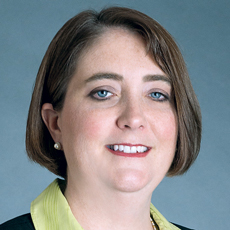
Consolidation, a fact of life in today’s healthcare industry, is prevalent in the long-term care arena as well. Locally and regionally, nursing homes, assisted-living facilities and home- and community-based service agencies are joining forces to share resources and achieve operating efficiencies. They are also establishing formal partnerships and mergers with hospitals, health systems and ACOs as a strategic maneuver to guarantee a future pipeline of patient referrals and a share of the government reimbursement pie.
Yet when healthcare entities join together, it creates the dilemma of who will lead. The first question is who will reside at the top. Often the choice for the official CEO position is obvious. The system may already have in place a strong, capable chief executive who is overseeing the consolidation activities and driving the expanding organization’s strategic direction. If not, the parent group will typically look among its stable of leaders for a generalist — someone with breadth of experience and an understanding of how larger, more centralized systems run. It’s also critical that this leader understand the intricacies of healthcare reform in order to best position the organization in the changing marketplace.
In other cases, an outsider will be recruited — someone with merger and acquisition experience, for example, with proven expertise in melding disparate organizations and facilities into one (hopefully) well-oiled healthcare providing machine.
Merely site managers?
A more perplexing issue is how to incorporate these long-term care and post-acute leaders into the larger organization. These once-autonomous CEOs and directors of LTC facilities or services are now brought together under one umbrella, jostling for position in a strange new environment. Will they have a seat at the table alongside acute care colleagues?
What often happens is that these leaders are given key administrative positions within the system—either to continue to oversee their current domain or to become the head of a department or service line. The loss of autonomy in such situations is inevitable, however, since major decisions must be made at the top echelon of the organization. A common lament among executives who have been brought into the fold of integrated systems or networks is that they are reduced to “site managers” or role players.
Strategies for success
It’s in the best interest of the consolidated organizations to find meaningful roles and responsibilities for these established long-term care executives and to make full use of their skill sets and expertise. But there are also steps that executives themselves can take to ensure a meaningful role within a broader, flatter, more centralized network. These include:
1. Assert your expertise. Leaders with vast knowledge of long-term care will need to exert influence upon their executive colleagues who, for example, might not fully appreciate transformations taking place in senior care — like the shift towards a more patient-focused “household” delivery model.
2. Stay abreast of healthcare reform. There will be a demand for leaders who understand how reform (government-driven or not) is changing the landscape and is reshaping business models for all healthcare organizations. There will be clear winners and losers in the marketplace, and those individuals who can anticipate what the future will look like will be valued.
3. Embrace partnering and collaboration. Executives will need to be team players within their expanded organizations. Whether internally or externally, they often must work with ACOs and other providers to, for example, provide reliable data on readmissions and share electronic medical records. This requires leaders who understand information technology, of course, but also who can forge and maintain relationships.
4. Be flexible. Business models are changing, with no clear picture of tomorrow’s long-term care landscape yet established. The ways and degrees that long-term care organizations are merging and partnering, for example, is dizzying. Executives will need to test what works in their local markets while staying in tune with national best practices (and their organizations’ preferred methods of operation).
Experienced long-term care executives who are brought into larger, consolidated organizations risk getting lost in the shuffle, or reduced to role players. They will need to be proactive to stay relevant and fulfilled in their newfound roles.
Jennifer Bauer is a senior associate with the executive search firm Witt/Kieffer. She focuses on executive-level placements at hospitals, health systems, long-term care facilities, continuing care retirement communities, and other organizations.




